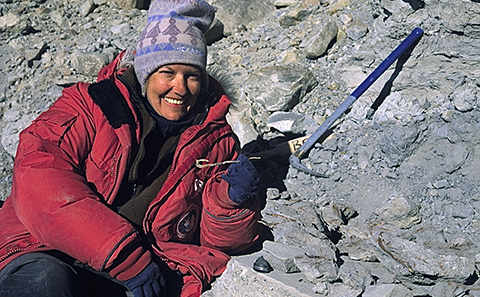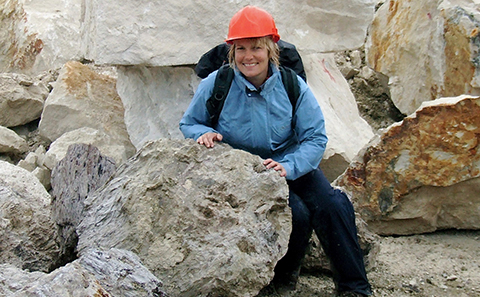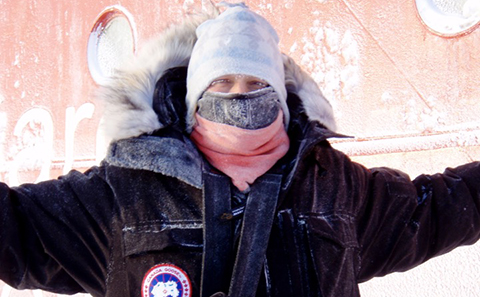‘Women need not apply’: Breaking down gender barriers in science

As one of the UK’s most eminent geologists, she has uncovered climate secrets from hundreds of millions of years ago. But Professor Dame Jane Francis, Director of the British Antarctic Survey and current British Science Association President, has had to battle through times when females had less opportunities in a science career.
But these hurdles haven’t held her back. Today, on International Women’s Day, the University of Southampton alumna is sharing career highlights and tips in the hope of inspiring the female scientists of the future.
“My biggest pieces of advice are to say ‘yes’ – it opens up doors to new opportunities whereas ‘no’ shuts doors immediately, and to network – being a successful scientist is all about networking and making connections,” said Jane. “A passion for your topic is also vital. And, as a female academic, I have been aware that it’s necessary to be careful not to be pushed down a pastoral care route if it’s science and research that drives you.”

A career against the odds
Jane’s first shock – due to being a female – came as she neared graduation.
“I got a shock at the milk round – the careers event where companies came to recruit graduates,” Jane recalled. “Most geology graduates started their careers core logging for oil exploration companies, and these jobs were in the Middle East or on oil rigs – both places where women weren’t allowed to work. I remember a poster advertising jobs in geology and at the bottom it said ‘women need not apply’. I remember feeling depressed seeing that.”
She reluctantly applied for non-industry jobs, until a PhD opportunity arose at the University of Southampton, studying rocks and fossil forests on the Dorset coast.
“Through my PhD, I learned about fossil forests and what they mean in terms of ancient climates and past environments,” she said. “Having that expertise led to the rest of my career that took me all around the world.”

The first place that expertise took her to was central Australia, to study ancient climates and fossil plants. Through the rocks there, she discovered that Australia was once in high latitudes and had very cold climates. “It was a paradox, working in such heat, trying to understand how it was once so cold,” she said.
Jane cites her first few weeks as BAS Director, headquartered in Cambridge, as another time her gender came to the fore. “When I was unpacking boxes in my new office, a security guard asked me if I was the new director’s secretary,” she said. “Other people asked me which part of BAS I was director of – they couldn’t believe I was the director.”
Jane is also this year’s President of the British Science Association (BSA) – a role she is using to promote the importance of women and diversity in science.

She commented: “It’s fantastic to be president and it’s so important to encourage women into science. It’s also important we have a greater diversity of people in science. One of BSA’s priorities, which I wholeheartedly support, is that children are exposed at school to more hands-on science activities, to do their own experiments and their own research. In my career, the most exciting moments have been when I have discovered something new to me or new to the world – that feeling is what can really capture young people’s love of science.”
Many of Jane’s pioneering discoveries have been during field camps she has undertaken in the Arctic and Antarctica – 15 in total. “Working in snow and ice, hitting open a rock and finding a fossil leaf that’s exposed for the first time for millions of years, which tells me that Antarctica was once covered in forests and the climate was once tropical – discovering that is an amazing feeling,” she said.

Future-looking
Jane’s current work with BAS is focused on understanding what the future looks like as our climate warms.
She outlined: “Earth’s climates have changed in the past but at a very different pace. Humans are making the climate change much, much faster than in the past, and that is very worrying. From a geological point of view, the planet can take care of itself, but the question is whether humans will be able to adapt to this rapid pace of climate change that we have created.
“We always thought that Antarctica was a big block of ice sitting on a big rocky continent that would be stable for a long time – but we can see it’s changing faster than we imagined. As a human race we have got to understand how we get back in balance with the natural environment – but we also need to be ready to adapt to a warmer world.”